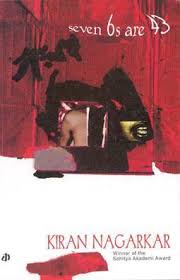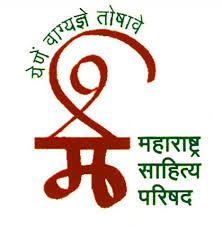VOL- 5 ; ISSUE 5 - PUNE RESEARCH SCHOLAR (ISSN 2455-314X) JIF 3.14
5.5 SCHOLAR
Area of Article : ALL

VOL- 5 ; ISSUE 5 - PUNE RESEARCH SCHOLAR (ISSN 2455-314X) JIF 3.14
5.5 SCHOLAR

VOL- 5 ; ISSUE 5 - PUNE RESEARCH SCHOLAR (ISSN 2455-314X) JIF 3.14
5.5.1 SCHOLAR

Watersheds are outstanding geographical field
examples. They also operate under human influences based on cultures, values,
economics, and politics, which exist at the interface between hydrosphere,
atmosphere, lithosphere, and biosphere. This article is about teaching
potential educators about watersheds ' geographical importance in relation to
sustainable water resources. The IDEAS project involves developing
teacher-training modules on sustainability of water resources that feature and
stress multinational-multicultural understanding. Geography offers an
outstanding collection of views, expertise and abilities to build a watershed
understanding as significant environmental / geographic areas and as complex
systems involving interactions between natural procedures and human activities.
Pre-school geography curricula in the U.S. presently devote only small
attention to problems of sustainability. Nevertheless, many U.S. geography
curricula States continue to be influenced by the content of the National
Geography Standards, Geography for Life (GESP, 1994), which offers many
opportunities for the inclusion of both physical and human sustainability
factors and issues. It is a sensible approach to introduce sustainability into
geography training to illustrate a direct set of connections between
sustainability problems and national standards.
Keywords:
Sustainable Progress, Watersheds, Water Resources, Teacher Education, National
Geography Standards, etc.
VOL- 5 ; ISSUE 5 - PUNE RESEARCH SCHOLAR (ISSN 2455-314X) JIF 3.14
5.5.2 SCHOLAR

Pragmatics has been considered one of the
powerful tools to analyze fictional discourse especially that occurs in short
stories, dramas and novels. The short stories of the Indian writers in English
are replete with speech acts of the characters which reflect interpersonal and
social relations in the contextual speech situations and speech events. Mulk Raj
Anand’s short stories are based on the ordinary incidents in the life of common
people. Therefore, an attempt is made in this article to analyze Mulk Raj
Anand’s short story ‘The Parrot in the Cage’ taking into consideration the
typology of Speech acts developed by J. R. Searle, the disciple of J. L .Austin
who is considered as the originator of the speech act theory. The categorically
selected speech acts from this story are analyzed in the light of locutionary,
illocutionary and perlocutionary dimensions. The speech acts of the characters
such as assertive, declarative, commissive, directive and expressive are
thoroughly discussed against the socio-cultural context.
VOL- 5 ; ISSUE 5 - PUNE RESEARCH SCHOLAR (ISSN 2455-314X) JIF 3.14
5.5.3 SCHOLAR

India
is an agrarian economy with 70% of its population dependent on agriculture.
Over the years we have improved our agricultural production which has been a
boon. But finding a market for the marketed surplus and getting fair prices
have always been a major challenge. This clearly points out the need of
agricultural marketing in the present times.
VOL- 5 ; ISSUE 5 - PUNE RESEARCH SCHOLAR (ISSN 2455-314X) JIF 3.14
5.5.4 SCHOLAR

This
paper deals with two of the novels of Nagarkar namelySeven Sixes are Forty
Three and Ravan and Eddie where he has described the Brahmin culture the
poverty and the class discrimination in our society but major focus is on the
condition of the females in this works. Because of his childhood experience he
can quickly realise the importance of religion and how the people have been
using it in a wrong way as far as our society is concerned.By the female
characters, Nagarkar tries to show that the females of Indian society are like
servants and the males of that society are behaving like their masters who have
all the rights to treat those service in whichever manner they like. So, let us
try to discuss how the novelist has made it possible in order to make the
readers realise this.
Key words:Caste Culture, Religion, Male, Female,
Society, Discrimination.
VOL- 5 ; ISSUE 5 - PUNE RESEARCH SCHOLAR (ISSN 2455-314X) JIF 3.14
5.5.5 SCHOLAR

Nirad
C. Chaudhuri, the most controversial writer of India, is a product of Indian
Renaissance, which according to him is “a synthesis of the values of the East
and the West.” (186) An uncompromising intellectual and rationalist, he has
aroused a good deal of controversy by expressing his odd and eccentric theories
on race and religion. Nurtured in an anglicised environment, Chaudhuri had a
predilection for Western thought and literature from his early boyhood.
Everything Western fascinated him and, hence, he emerges as an inveterate
anglophile in his writings. Endowed with “the emotion of scholarship,”
Chaudhuri affect pedantry and his books and articles are overloaded with
references and French and Latin quotation. However, he is a conscious stylist,
who shows meticulous care in polishing and refining his style.
Key words: History, Culture, Society, India and England.
VOL- 5 ; ISSUE 5 - PUNE RESEARCH SCHOLAR (ISSN 2455-314X) JIF 3.14
5.5.6 SCHOLAR

Confessional
poetry is an “attempt to present the poet’s own naked self and unrationalised,
uncensored actual feelings and behaviour”.1 It is also an encounter
with the miseries of the self, a sense of violence and guilt expressed in
relation to the vagaries of the world.
Sylvia Plath and Kamala Das are two confessional poets of the modern
times, who have struggled for self realisation, in relation to their social
role. Their self-exploration leads to
their culture and their identity. Since they are sensitive women, their
reactions are more intense and frustrations more subtle, causing distortion of
psychic energy. Their alienation, anger, miseries and madness-- all demonstrate
a break within the self-perpetuating and self-confirming system, created by the
tensions between their private and public world.
VOL- 5 ; ISSUE 5 - PUNE RESEARCH SCHOLAR (ISSN 2455-314X) JIF 3.14
5.5.1 स्कॉलर

VOL- 5 ; ISSUE 5 - PUNE RESEARCH SCHOLAR (ISSN 2455-314X) JIF 3.14
5.5.2 स्कॉलर

VOL- 5 ; ISSUE 5 - PUNE RESEARCH SCHOLAR (ISSN 2455-314X) JIF 3.14
5.5.3 स्कॉलर

eqLyhe
ejkBh ukVdkarwu rGkxkGkrhy eqfLye lektkP;k fud`”V izrhps thou vkf.k R;kaph
lq[k&nq%[ks] Hkko&Hkkouk vkf.k vuqHko fpf=r >kys vkgsr- gk lekt
f’k{k.k o vFkZdkj.k ;kr Qkj ekxs iMysyk vkg] gs gh Li”V dsys vkgs- rGkxkGkrhy
ekxklysY;k eqfLye lektki;Zar f’k{k.k iksgksp.ks [kwi xjtsps vkgs-
f’k{k.kkvHkkoh R;akpk n`”Vhdksu ladqfpr cuyk vkgs- R;kapk fodkl [kqaVyk vkgs-
eqfLye lektkrhy izR;sd ?kjkr f’k{k.kkps egRo iVowu nsÅu R;kauk f’k{k.k ns.ks]
vko’;d vkgs- ts.ksd:u R;kapk dkSVqafcd o lkekftd fodkl lk/; gksbZy v’kh
iqjksxkeh tk.kho ;k ukVdkarwu O;Dr >kyh vkgs-
VOL- 5 ; ISSUE 5 - PUNE RESEARCH SCHOLAR (ISSN 2455-314X) JIF 3.14
5.4.5 स्कॉलर

zakuraMnaI ‘]Va punha haca KoL’ yaa kadMbarIcyaa
AnauYaMgaanao saaih%ya saMmaolanaamaagacao kalacao va Aajacao vaastva maaMDlao
Aaho. saaih%ya saMmaolana mhNajao AanaMd saaohLa. jyaat sava- Qamaa-cyaa,
jaatIcyaa, vaMSaacyaa, p`aMtacyaa BaaYaotIla
laaokaMcaa sahBaaga AsaNao AavaSyak Asato. saaih%ya saMmaolanaat saaih%ya AaiNa
saaihi%yak yaaMnaa ‘Aga`pUjaocaa maana’ Asaavayaasa hvaa. saaih%yaaivaYayaI
tLmaL, AaMtirk AaoZ Asaavayaasa hvaI. pNa Aajacyaa saaih%ya
saMmaolanaatUna ica~ far vaogaLo idsato zakuraMnaI yaa ba_la%yaa saaih%ya
ivaSvaacaa vastuinaaYT vaoQa yaa kadMbarIt Gaotlaa Aaho.
VOL- 5 ; ISSUE 5 - PUNE RESEARCH SCHOLAR (ISSN 2455-314X) JIF 3.14
5.5.5 स्कॉलर

मागील काही वर्षात भारत महाशक्तीच्या दिशेने वाटचाल करीत
आहे. सद्यस्थितीत भारत जगातील चौथी महाशक्ती आहे. परंतु आजही भारतात अनेक आदिवासी
जमाती विकासापासून दूर आहे. दारिद्र, कुपोषण, अंधश्रध्दा, निरक्षरता, व्यसनाधीनता,
बालविवाह, अस्वच्छता याप्रकारच्या अनेक समस्या या जमातीमध्ये दिसून येतात. यातूनच
आरोग्यविषयक समस्या निर्माण होतात. काळा गोटा हे १००% पारधी जमात असलेली वस्ती
असुन येथे सुद्धा वरील समस्या दिसून येतात. प्रस्तुत शोध निबंधात काळा गोटा या पारधी
बेडा (वस्ती) येथील पारधी जमातीचे आरोग्य विषयक समस्यांवर आर्थिक, सामाजिक भौगोलिक
परिस्थितीच्या होणा-या परिणामाचे अध्ययन करण्यात आले आहे.
VOL- 5 ; ISSUE 5 - PUNE RESEARCH SCHOLAR (ISSN 2455-314X) JIF 3.14
5.5.6 स्कॉलर

भू राजनीतिक दृष्टि से
सिद्धांतों व तथ्यों के परिप्रेक्ष्य
में ‘भारतीय उपमहाद्वीप’ का विश्लेषण करने के पश्चात यह पता चलता है कि इस संपूर्ण
उपमहाद्वीप का प्रमुखतम् देश भारत भविष्य
की विश्वशक्ति बनने की पूरी संभावना रखता है; यह देश केवल अपने लिए विश्व की सामर्थ्य को बटोरकर; मात्र
अपना विकास नहीं चाहता, बल्कि समस्त विश्व को अपनी सामर्थ्य और
अपनी पोषक-दृष्टि से समुन्नत तथा श्रेष्ठ बनाना चाहता है और ऐसा
करने करने में वह समर्थ था व आज भी समर्थ है क्योंकि शक्ति और सामर्थ्य होने के साथ
साथ विश्व कल्याण की भावना उसके संस्कारों, उसकी मिट्टी में निहित
है। भारत केवल शक्ति अर्जित कर विश्व में सबसे बड़ी शक्ति बनना नहीं चाहता,
जैसे कि ब्रिटेन, रूस
,जर्मनी व फ्रांस बने और आज अमेरिका सबसे बड़ी शक्ति बन, अपनी आतंक भरी छाप विश्व पर
जमाये है। इन सभी देशों
में विश्व की सोच नहीं, विश्व कल्याण की दृष्टि नहीं,
बल्कि ये सभी शक्ति संपन्न भू राजनीतिक इकाइयां हैं, जो अपने लिए औरों को दबोचती और शोषित करती हैं।
VOL- 5 ; ISSUE 5 - PUNE RESEARCH SCHOLAR (ISSN 2455-314X) JIF 3.14
5.5.7 स्कॉलर

ekuokus lekt fuekZ.k dsyk-jkT;laLFkk fuekZ.k dsyh-laLd`rh fuekZ.k dsyh-/kekZph LFkkiuk dsyh-vkiY;k
uouoksUes”k’kkyhu izfrHksrwu rRoKku]’kkL=]dyk]lkfgR; ;kauk tUe fnyk-loZ mUurhyk
ik;kHkwr vlysyh Hkk”kk fuekZ.k d:u vkiys lxGs vuqHko o lkaLd`rhd lafpr
‘kCnkafdr d:u rs f’k{k.kkP;k ek/;ekrwu iq<hy fi<hl iznku dj.;kph i)rh
:< dsyh Eg.kqu izkfpu dkGkiklwu f’k{k.k gk thoukrhy vko’;d laLdkj gksowu
clyk vkgs-cq)h]g`n; o vkRek ;kapk fodkl Eg.kts f’k{k.k gks;-
VOL- 5 ; ISSUE 5 - PUNE RESEARCH SCHOLAR (ISSN 2455-314X) JIF 3.14
5.5.8 स्कॉलर

20 JÙee MelekeâeceOÙes pÙeebveer
YeejleerÙe Feflenemeeuee JesieUs JeUCe efoues. DeMee ueeskeâebceOÙes cee.
ieebOeerÛeer ieCevee kesâueer peeles. ieebOeer veer DeeheuÙee efJeÛeejevegmeej
YeejleerÙe jepekeâejCeeuee JesieUs JeUCe efoues. ieebOeerveer YeejleerÙe
jepekeâejCeeÛeer meceerkeâjCes yeouetve šekeâueer. keâeB«esmeceOÙes Deeceguee«e
heefjJele&ve Ie[Jetve DeeCeues. ieebOeer efJeÛeejebveer ØelÙeskeâ #es$eeuee
ØeYeeefJele keâjCÙeeÛes keâece kesâues. ieebOeerveer pÙee heOoleerves
YeejleerÙe je°^erÙe ÛeUJeUeruee efoMee efoueer. lÙeeÛe heOoleerves DeeheuÙee
jÛeveelcekeâ keâeÙe&›eâceeÛÙee ceeOÙeceeletve DeeheuÙee osMeeleerue
meeceeefpekeâ mecemÙee otj keâjCÙeeÛes keâece les keâjle nesles. ieebOeerveer
YeejleerÙe efŒeÙeebÛÙee GOoejemee"er YejerJe DeMeer keâeceefiejer kesâueer
Deens. lÙeebÛes efŒeÙeebÛÙee mebyebOeerÛes °erkeâesCe, lÙeebÛeer lÙee mebyebOeerÛeer
Yetefcekeâe mJeeleb$Ùe ÛeUJeUerÛÙee ojcÙeeve keâeÙe jeefnueer. ieebOeerÛee
Skeâobjerle efŒeÙeebmebyebOeer keâeÙe efJeÛeej nesles, lÙeebveer YeejleerÙe
ceefnueebceOÙes keâesCeleer Deelce peeie=leer efvecee&Ce kesâueer ÙeeÛee
DeYÙeeme keâjCÙeemee"er Øemlegle efJe<eÙeeÛeer efveJe[ keâjCÙeele
Deeueer Deens.
VOL- 5 ; ISSUE 5 - PUNE RESEARCH SCHOLAR (ISSN 2455-314X) JIF 3.14
5.5.9 स्कॉलर

ns’k esa fo’ks”kr% ;qok oxZ ds dkS’ky fodkl ij /;ku fn;k tk; rks xzkeh.k fodkl lk/kk tk ldrk gSA Hkkjr ljdkj dk dsUnzh; dkS’ky fodkl ,oa m|ferk ea=ky; bl gsrw fo’ks”k iz;kl dj jgk gS dkS’ky fodkl dh vusd xfrfof/k;kWa] dk;ZØe vkSj ;kstuk, dks vaey esa yk;k tk jgk gSA dsUnzh; ctV esa blds fy, cMh /kujk’kh dk izko/kku fd;k x;k gSA dkS’ky fodkl ls ykHkkfUor xzkeh.k {ks= ds ;qok dks jkstxkj lq/kkj gksxk rks jk”Vª dh vFkZO;oLFkk Hkh etcwr gksxh xzkeh.k fodkl esa dkS’ky fodkl egŸoiw.kZ Hkwfedk fuHkk ldrk gSA